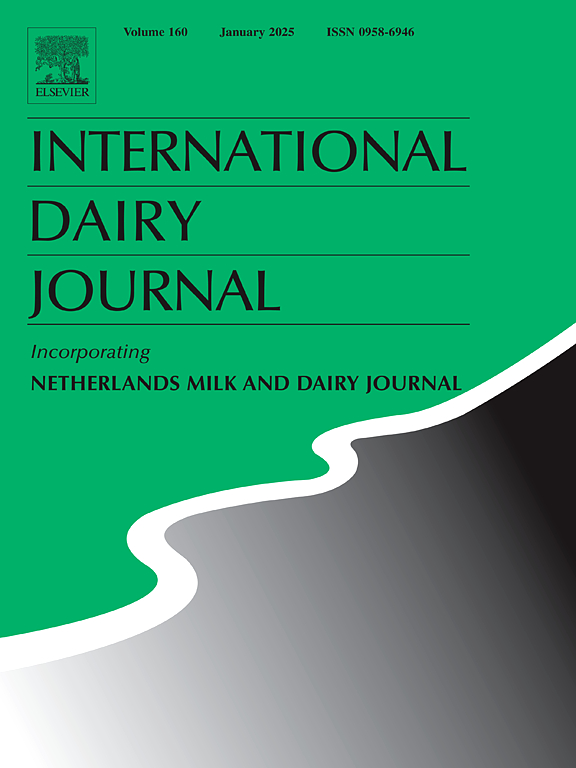Characterization of microorganisms following dairy keeping quality tests in Québec
IF 3.4
3区 农林科学
Q2 FOOD SCIENCE & TECHNOLOGY
引用次数: 0
Abstract
Despite best efforts of the dairy industry, premature spoiling and non-compliance of products remain problematic and cause economic loss. In this study, 190 dairy products/samples of the Québec province were analyzed using governmental quality tests and keeping quality tests, such as the Virginia Tech. procedure, the Moseley test and a Paenibacillus test, to allow identification, by 16S sequencing, and characterization of the microorganisms causing non-compliance. We found that the Paenibacillus test isolated mostly Bacillus and Paenibacillus whereas the other tests isolated primarily Pseudomonas. Tests in 96-well assay plates showed that Pseudomonas had the most moderate to strong biofilm forming ability producers. Except for four isolates of Pseudomonas and one isolate of Stenotrophomonas chelatiphaga, biofilm producers were sensitive to both sodium hypochlorite and peracetic acid at concentrations typically used to disinfect dairy equipment. This study will help in the development of control strategies targeting problematic bacterial contaminants in the dairy sector.
曲海省乳品保存质量试验后微生物的特征
尽管乳制品行业尽了最大努力,但产品过早变质和不合规问题仍然存在,并造成经济损失。在这项研究中,使用政府质量测试和保存质量测试,如弗吉尼亚理工大学程序、Moseley测试和Paenibacillus测试,分析了quamezbec省的190种乳制品/样品,以便通过16S测序鉴定和表征导致不合格的微生物。我们发现Paenibacillus试验主要分离出芽孢杆菌和Paenibacillus,而其他试验主要分离出假单胞菌。96孔板试验表明,假单胞菌具有最中强的生物成膜能力。除了4株假单胞菌和1株螯合窄养单胞菌外,生物膜生产者对次氯酸钠和过氧乙酸均敏感,其浓度通常用于乳品设备消毒。这项研究将有助于制定针对乳制品行业有问题的细菌污染物的控制策略。
本文章由计算机程序翻译,如有差异,请以英文原文为准。
求助全文
约1分钟内获得全文
求助全文
来源期刊

International Dairy Journal
工程技术-食品科技
CiteScore
6.50
自引率
9.70%
发文量
200
审稿时长
49 days
期刊介绍:
The International Dairy Journal publishes significant advancements in dairy science and technology in the form of research articles and critical reviews that are of relevance to the broader international dairy community. Within this scope, research on the science and technology of milk and dairy products and the nutritional and health aspects of dairy foods are included; the journal pays particular attention to applied research and its interface with the dairy industry.
The journal''s coverage includes the following, where directly applicable to dairy science and technology:
• Chemistry and physico-chemical properties of milk constituents
• Microbiology, food safety, enzymology, biotechnology
• Processing and engineering
• Emulsion science, food structure, and texture
• Raw material quality and effect on relevant products
• Flavour and off-flavour development
• Technological functionality and applications of dairy ingredients
• Sensory and consumer sciences
• Nutrition and substantiation of human health implications of milk components or dairy products
International Dairy Journal does not publish papers related to milk production, animal health and other aspects of on-farm milk production unless there is a clear relationship to dairy technology, human health or final product quality.
 求助内容:
求助内容: 应助结果提醒方式:
应助结果提醒方式:


